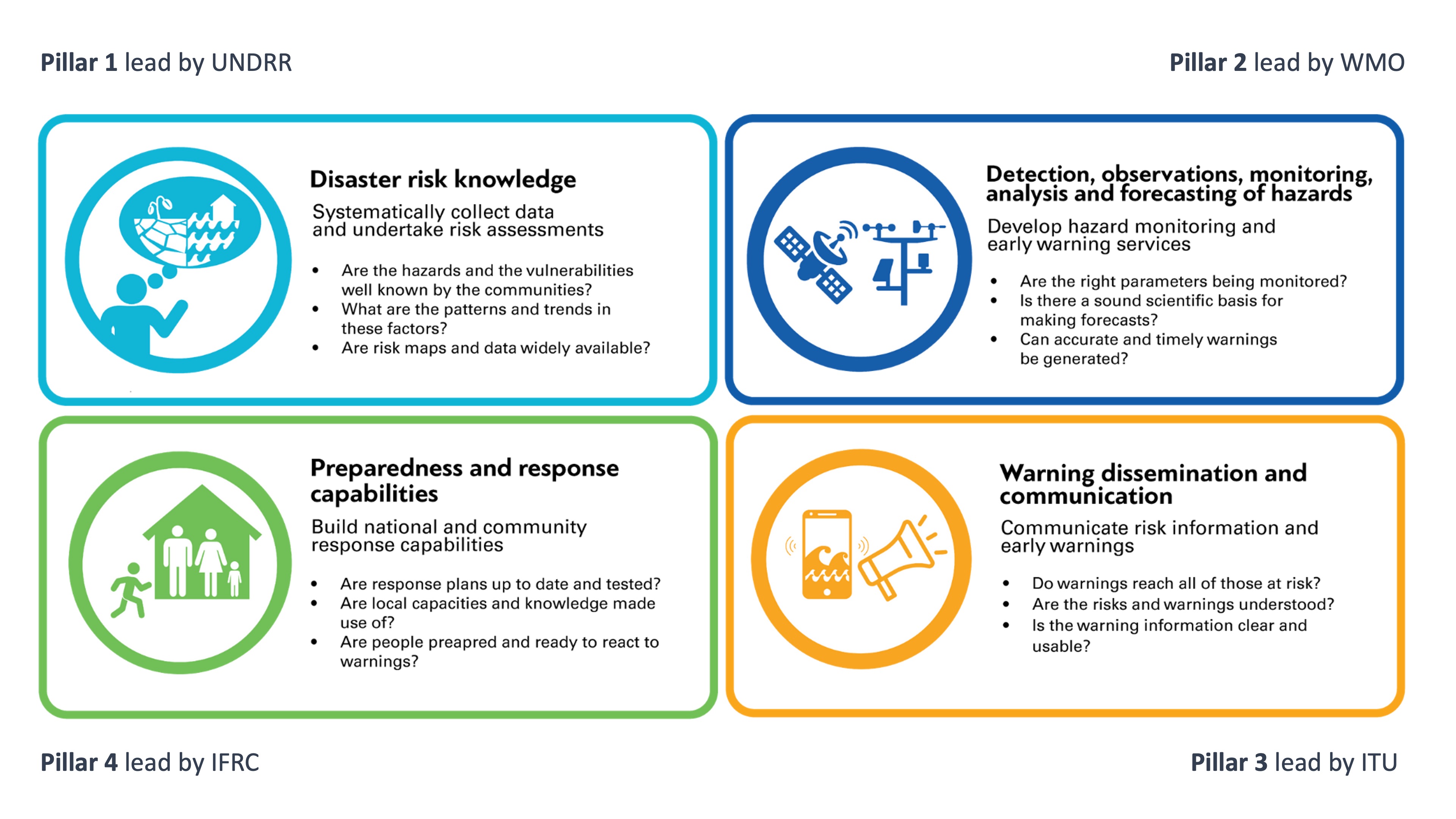Flash Flood Safety: Essential Information On Flood Warnings And Emergency Response

Table of Contents
Understanding Flash Flood Risks
Flash floods are particularly dangerous because of their speed and unpredictable nature. Understanding your risk is the first step to staying safe.
Identifying High-Risk Areas
Geographic location plays a significant role in flash flood vulnerability. Certain areas are inherently more susceptible to these devastating events.
- Mountainous Regions: Steep slopes accelerate water runoff, leading to rapid increases in water levels in valleys and canyons.
- Areas with Steep Slopes: Similar to mountainous regions, steep slopes funnel water quickly into lower-lying areas.
- Dry Creek Beds and Arroyos: These seemingly harmless features can transform into raging torrents during heavy rainfall.
- Areas with Inadequate Drainage: Poor urban planning and insufficient drainage systems can exacerbate flooding.
- Proximity to Rivers and Streams: Areas near rivers and streams are naturally more vulnerable to flooding, especially during periods of heavy rainfall.
Soil saturation significantly impacts flash flood risk. When the ground is already saturated from previous rainfall, additional rainfall has nowhere to go, leading to rapid surface runoff and flash flooding. Topography, or the shape of the land, also plays a key role; areas with low-lying points or constricted waterways are more likely to experience flash flooding.
Recognizing Flash Flood Warning Signs
Recognizing the signs of an impending flash flood is critical for timely evacuation and response. Don't wait for an official warning; be aware of these visual and auditory cues:
- Rapidly Rising Water Levels: A sudden and dramatic increase in water levels in rivers, streams, or normally dry areas.
- Strong and Fast Currents: Water flowing much faster than usual, carrying debris.
- Unusual Water Sounds: Rushing water sounds from a distance, even in areas where water isn't usually visible.
- Overflowing Rivers and Streams: Water exceeding the banks of rivers or streams.
- Debris in the Water: Unusual amounts of debris like branches, logs, and trash being carried by the current.
- Sudden Changes in Water Color: A muddy or discolored appearance indicating sediment and debris being washed into the water.
Distinguishing between normal water flow and potentially dangerous flash flood conditions requires paying close attention to changes in water levels, speed, and sound. If you notice anything unusual, err on the side of caution.
Heeding Flash Flood Warnings and Advisories
Staying informed is paramount during periods of heavy rainfall. Meteorological agencies issue different levels of warnings to alert the public.
Understanding Different Warning Levels
Understanding the distinctions between these alerts is crucial for appropriate action:
- Flash Flood Watch: Conditions are favorable for flash flooding. Stay informed and be prepared to act.
- Flash Flood Warning: Flash flooding is occurring or is imminent. Take immediate action to protect yourself and your property.
- Flash Flood Advisory: Flash flooding is possible. Be aware of the potential hazard and monitor conditions.
Stay informed through multiple sources:
- National Weather Service (NWS) website: Check for updates and alerts in your area.
- Local news channels: Television and radio broadcasts provide real-time updates.
- NOAA Weather Radio: A dedicated weather radio provides continuous alerts.
- Mobile weather apps: Download reputable weather apps and enable location-based alerts.
Utilizing Technology for Early Warnings
Technology offers valuable tools for receiving timely flash flood warnings.
- Weather Apps (e.g., AccuWeather, The Weather Channel): These apps provide real-time weather updates, forecasts, and often include severe weather alerts.
- Wireless Emergency Alerts (WEA): Your mobile phone can receive emergency alerts directly from the National Weather Service. Ensure this feature is enabled.
- Local Emergency Management Websites: Many local governments have websites and social media accounts dedicated to emergency preparedness and alerts.
Emergency Response During a Flash Flood
Knowing what to do during a flash flood can save your life.
Evacuation Procedures
If a flash flood warning is issued, evacuate immediately if instructed by authorities.
- Gather Emergency Supplies: Assemble a go-bag with essential items like water, food, medications, and important documents.
- Move to Higher Ground: Evacuate to a safe location, preferably a designated evacuation shelter.
- Follow Evacuation Routes: Adhere to designated evacuation routes provided by authorities. Avoid flooded roads.
- Never Drive Through Floodwaters: Floodwaters can be deceptively deep and fast-moving, even a few inches can sweep a vehicle away.
Obeying evacuation orders is critical. Do not attempt to drive through floodwaters; the risk of drowning or being swept away is extremely high.
Staying Safe in Your Home During a Flash Flood
If evacuation isn't possible, take these precautions:
- Move to Upper Floors: If your home is at risk of flooding, move to the highest floor.
- Secure Belongings: Move valuable items to higher levels to protect them from damage.
- Turn Off Utilities: Turn off electricity, gas, and water to prevent further hazards.
- Avoid Contact with Floodwater: Floodwater is often contaminated with sewage and other dangerous substances.
- Monitor the Situation: Keep an eye on water levels and weather reports.
- Contact Emergency Services: Call emergency services if you need assistance or if the situation worsens.
Post-Flash Flood Safety
After the floodwaters recede, there are important steps to take.
Assessing Damage and Seeking Help
Inspecting your property for damage and contacting the relevant authorities is crucial.
- Contact Your Insurance Company: Report damages to your insurance company as soon as possible.
- Document Damages: Take photos and videos of the damage to your property.
- Avoid Contaminated Water: Do not enter floodwater without proper protective gear; it may contain harmful substances.
- Contact FEMA (Federal Emergency Management Agency): If you need assistance, contact FEMA to explore potential aid programs.
Cleaning up after a flash flood requires caution. Wear protective gear and be aware of potential hazards like broken glass, downed power lines, and contaminated water.
Preventing Future Flash Flood Damage
Taking proactive measures can significantly reduce your risk of future flash flood damage.
- Improve Drainage: Ensure your property has proper drainage systems to manage water runoff.
- Clear Debris: Regularly clear debris from gutters, drains, and around your property.
- Install Flood Barriers: Consider installing flood barriers or other flood protection measures around your home.
- Landscaping Changes: Strategic landscaping can help divert water away from your home.
By implementing these preventative measures, you can significantly lessen the impact of future flash floods on your property.
Conclusion
Flash floods are dangerous, but preparedness is key. By understanding flash flood risks, heeding warnings promptly, and following emergency response procedures, you significantly increase your chances of staying safe. Remember to utilize available resources like the National Weather Service and mobile weather apps, create a family emergency plan, and take steps to mitigate future risks. Don't wait for a flash flood warning to learn about flash flood safety—prepare today! Stay informed and protect yourself and your loved ones from the devastating effects of flash floods.

Featured Posts
-
 Gold Prices Jump Amidst Renewed Trade War Concerns
May 26, 2025
Gold Prices Jump Amidst Renewed Trade War Concerns
May 26, 2025 -
 A Look At F1 Greats Successes And Failures After 40
May 26, 2025
A Look At F1 Greats Successes And Failures After 40
May 26, 2025 -
 La Lutte Contre Le Piratage Iptv Rtbf Et Rtl Belgium Unissent Leurs Forces
May 26, 2025
La Lutte Contre Le Piratage Iptv Rtbf Et Rtl Belgium Unissent Leurs Forces
May 26, 2025 -
 Virtue Signaling And The Future Of Architecture A Provocative Conversation
May 26, 2025
Virtue Signaling And The Future Of Architecture A Provocative Conversation
May 26, 2025 -
 Tennis Participation In The Nation To Exceed 25 Million By August 2024 Key Findings
May 26, 2025
Tennis Participation In The Nation To Exceed 25 Million By August 2024 Key Findings
May 26, 2025
